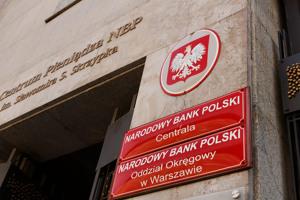Tavex uses cookies to ensure website functionality and improve your user experience. Collecting data from cookies helps us provide the best experience for you, keeps your account secure and allows us to personalise advert content. You can find out more in our cookie policy.
Please select what cookies you allow us to use
Cookies are small files of letters and digits downloaded and saved on your computer or another device (for instance, a mobile phone, a tablet) and saved in your browser while you visit a website. They can be used to track the pages you visit on the website, save the information you enter or remember your preferences such as language settings as long as you’re browsing the website.
| Cookie name | Cookie description | Cookie duration |
|---|---|---|
| tavex_cookie_consent | Stores cookie consent options selected | 60 weeks |
| tavex_customer | Tavex customer ID | 30 days |
| wp-wpml_current_language | Stores selected language | 1 day |
| AWSALB | AWS ALB sticky session cookie | 6 days |
| AWSALBCORS | AWS ALB sticky session cookie | 6 days |
| NO_CACHE | Used to disable page caching | 1 day |
| PHPSESSID | Identifier for PHP session | Session |
| latest_news | Helps to keep notifications relevant by storing the latest news shown | 29 days |
| latest_news_flash | Helps to keep notifications relevant by storing the latest news shown | 29 days |
| tavex_recently_viewed_products | List of recently viewed products | 1 day |
| tavex_compare_amount | Number of items in product comparison view | 1 day |
| Cookie name | Cookie description | Cookie duration |
|---|---|---|
| chart-widget-tab-*-*-* | Remembers last chart options (i.e currency, time period, etc) | 29 days |
| archive_layout | Stores selected product layout on category pages | 1 day |
| Cookie name | Cookie description | Cookie duration |
|---|---|---|
| cartstack.com-* | Used for tracking abandoned shopping carts | 1 year |
| _omappvp | Used by OptinMonster for determining new vs. returning visitors. Expires in 11 years | 11 years |
| _omappvs | Used by OptinMonster for determining when a new visitor becomes a returning visitor | Session |
| om* | Used by OptinMonster to track interactions with campaigns | Persistent |
| Cookie name | Cookie description | Cookie duration |
|---|---|---|
| _ga | Used to distinguish users | 2 years |
| _gid | Used to distinguish users | 24 hours |
| _ga_* | Used to persist session state | 2 years |
| _gac_* | Contains campaign related information | 90 days |
| _gat_gtag_* | Used to throttle request rate | 1 minute |
| _fbc | Facebook advertisement cookie | 2 years |
| _fbp | Facebook cookie for distinguishing unique users | 2 years |

Poland’s central bank, officially the world’s largest gold buyer last year, accelerated its purchases further in the first quarter. Poland’s reserves now exceed those of the European Central Bank, according to new data. The central bank’s head says gold is the cornerstone of their economic independence.
The Polish central bank bought a total of 49 tonnes of gold in the first quarter. The purchases continued in April. The central bank also announced in mid-April that its gold reserves had increased to 509.3 tonnes, surpassing the European Central Bank’s reserves of 506.3 tonnes.
Poland is now ranked 7th in Europe in terms of gold reserves, after Germany, Italy, France, Russia, Switzerland and the Netherlands. Globally, it is ranked 12th in the gold reserves ranking. Last year, Poland was the world’s largest gold buyer.
Read more on the topic here: Poland Becomes the World’s Largest Gold Buyer
“This shows the stability, wealth and solvency of the Polish economy,” said Adam Glapinski, the governor of the central bank, at a press conference in early May. He said gold protects against global instability and is the cornerstone of economic independence.
Gold is the Safest Reserve Asset

Earlier this week, Glapinski outlined several reasons why Poland considers large gold reserves necessary. He said that gold remains the safest reserve asset because it is independent of any country’s economic policy and retains its value over the long term.
“It is a symbol of stability and strengthens our credibility in the eyes of both investors and foreign partners,”
Glapinski told people who visited the central bank’s vaults. Rumors are also circulating in Poland that the central bank does not actually have enough gold in its vaults, and the visit was organised precisely because of this.
Poland decided to bring 100 tons of gold from the Bank of England back to its homeland in Warsaw in 2019. A total of eight flights were made and 8,000 gold bars were moved.
The Polish National Bank sees gold as an important strategic reserve asset. The website states that gold is not a liability and does not carry any credit risk. It also states that the physical properties of gold make it durable and indestructible.
Gold Investments are Highly Profitable

Gold now accounts for 22 percent of the central bank’s total reserves, exceeding the 20 percent target set by the central bank a few years ago.
Back in 1996, Poland held just 14 tons of gold. By 2016, gold reserves had risen to 102 tons. The growth of gold reserves began to accelerate in 2023, after the war in Ukraine began.
In just over two years, reserves have increased from 228 tons to 509 tons
According to Glapinski, the value of Poland’s gold reserves had increased by 60 billion zlotys (14.1 billion euros) compared to purchase prices by the end of 2024. Today, the Poles’ gold is worth 48 billion euros. Glapinski added that Poland has no plans to sell its gold, the Notes from Poland portal reported.
About 20 percent of Poland’s gold is stored domestically, with the rest in vaults in New York and London. Glapinski said the central bank aims to keep a third of its gold in each location for security reasons.
Central Banks Continue to Buy Up Gold

Central banks around the world continued to buy gold in the first quarter. A total of 244 tonnes of gold were purchased, which is more than 100 tonnes less than the previous quarter, but 48 tonnes more than the average over the past five years.
Read more on the topic here: 5 Reasons Why Central Banks Buy Gold
The uncertainty in the economy and financial markets in the first quarter helped to keep central bank purchases high. Last year’s WGC survey found that central banks mainly buy gold because it is a good store of value and protects against crises. The increase in uncertainty was likely one of the reasons why central banks’ interest in gold remained high.
In addition to the Polish central bank, the largest buyers of gold in the first quarter were the National Oil Fund of Azerbaijan, China, Kazakhstan, the Czech Republic, Turkey, India, Qatar and Egypt. Russia and Uzbekistan were the largest sellers, with 3 and 15 tonnes respectively.
According to the World Gold Council (WGC), central banks reported only 22 percent of purchases in the quarter, meaning that in most cases it is not known who is behind the purchases.
The WGC said there was evidence that central banks increased their gold lending in the quarter, creating a shortage in the market. Interest rates paid to borrow gold rose sharply as large quantities of gold moved from London to the Comex exchange in New York, driven by uncertainty over tariffs.

















